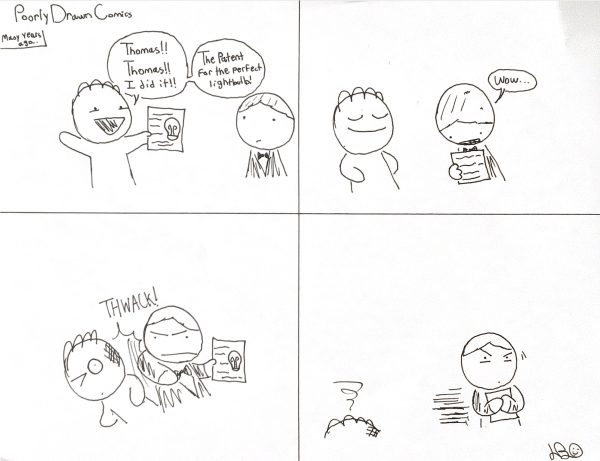The Pacer Test EXPOSED

Photo via https://pxhere.com/en/photo/443010 via the Creative Commens liscense.
Jun 14, 2023
You have just left the locker room in gym and are now heading to your seats. You’re chatting with your friend and then you see it. The gym teachers are bringing out the cones and the speaker. Then they announce it. It’s time for the Pacer Test.
Students usually blame their gym teachers for the often horribly thought of Pacer Test and the actual grading of it. But who actually caused this change in the Pacer Test grading system? At last, the great question has been answered. Mrs. Trachetti, a volleyball coach and health teacher at WMS, explains that the change was caused by “new administration”.
The Pacer Test may only seem like a horrible session of forced running on students, but according to Ms. Trachetti, there are actually some benefits to the Pacer.
Ms. Trachetti mentioned that the Pacer “hopefully helps students push themselves” and helps them “find some sort of joy for following instructions”, as well as the Test being “good for their heart, good for their lungs.”
However, Ms. Trachetti acknowledged the major downsides to the Pacer Test, “If students are struggling , if they have any injuries that have been lingering. Just stuff like that. Students who aren’t motivated through exercise. That’s the big downside.”
What would you do as a teacher? Would you grade the Pacer Test? Ms Trachetti would, but in a different way than it is graded now. Ms.Trachetti said she would “choose to have it as a minor grade instead of a major”, however “we need 2 major grades in gym, so that was just one of the main ones that we thought would work.”
What about the grading of the Pacer Test? Opinions on that are more mixed than to be believed. Teachers and students both agree and disagree over the topic. Ms Trachetti explained that the gym teachers “do need to have some type of major grade in class,” as well as “you know cardiovascular endurance is important and hopefully it encourages students to try harder and do their best because it’s good for them and it is a major grade. But we are very lenient when it comes to the scores.”
Another opinion on the Pacer comes from Veronica Diaz, an actress and singer in and out of WMS, who does not seem to like the Pacer Test. Diaz explains that, “I don’t like it, because if you don’t do good, than you get a bad grade, and immediately if you’re good at running, you’re just going to get a good grade, but I’m not.” During the Pacer Test, Diaz usually ran 16 to 20 laps.
Emalee Rizitis, captain of the WMS cheer team, offers a similar viewpoint on the Pacer Test. Rizitis said that “if you are not going to do good on Pacer” than the teachers should “give you a free way to do it” and that “if you want to Pacer, and if you know that you’re going to do good on it, then you can do it for a grade” and that for students who have more difficulty with the Pacer Test “they should have a thing where you shouldn’t get a grade for it.” Rizitis’ normal amount of laps run is in the 50-60s.
Simon Monsanto, an 8th grader at WMS, usually runs 90 to 100 laps during Pacer. His opinion on the grading of the Pacer Test is similar to most others with him saying that the grading for the Pacer Test is “unfair” towards those who aren’t “able to run”.
A unique perspective on the grading of the Pacer Test comes from Rayan Czerwonka, another 8th grader at WMS, who is “ok” with the grading of the Pacer Test. Czerwonka always “aims for above a 40” and how that’s “an A+.” Czerwonka thinks that the Pacer is something the teachers see as “a way to push students to do better.” Czerwonka usually runs 50-57 laps during Pacer.
Gianna Giron-Gonzalez, a star athlete at WMS, explained her stance on the grading of the Pacer Test, “I personally don’t think it should be graded because not a lot of people like athletics, which is fine, but I feel like someone should just do as much as their abilities can, without being graded because I feel like that grade could reflect on them in a negative way.” Giron-Gonzalez usually runs 40-41 laps during Pacer because she just “wants to get the 100.”
For a better future for the Pacer Test, I can think of two possibilities. One being that you are graded based on improvement, rather than based on just how far you can run. Or we could do what Rizitis mentioned before, with a person being able to choose what to do, Pacer or some other assignment so they don’t have horrible grade just because they can’t run.
Whatever the future brings, I hope the Pacer is better of the alternative, as eloquently stated by Diaz, “No more Pacer, goodbye.”




